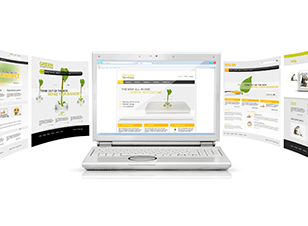 Even if you don’t plan to offer goods or services for sale online, a great website is indispensable in today’s marketplace. A well designed site helps generate interest in your business and encourages local residents to track down your bricks and mortar establishment. Since customers may decide to check your site before visiting in person, it needs to present your business in the best possible light. This means that the information your prospective customers are searching for must be easy to find and accessible. These four tips will help turn curious website visitors into eager customers.
Even if you don’t plan to offer goods or services for sale online, a great website is indispensable in today’s marketplace. A well designed site helps generate interest in your business and encourages local residents to track down your bricks and mortar establishment. Since customers may decide to check your site before visiting in person, it needs to present your business in the best possible light. This means that the information your prospective customers are searching for must be easy to find and accessible. These four tips will help turn curious website visitors into eager customers.
Business Location
The first key item on most visitors’ lists will be a way to find your premises. Include your address on your front page, formatted as text rather than as an image or part of an animation. Customers may want to copy and paste your address into an email or send it as a text — don’t make it harder for them to do this. You should also provide visitors with a map. A link to Google Maps or another online map site will be particularly helpful, since it will enable them to get directions from their location more easily. Give details of nearby parking and public transport. Remember, local information isn’t just helpful for your customers, it also helps your page to perform better in web searches.
Business Opening Times
Your customers need to know what times you’re open. List your hours of business, taking care to note any limitations or restrictions. For example, a website for a cafe might mention that their breakfast menu is only served until 11am. If you change your opening times, highlight this on your page as well as highlighting public holiday trading hours for your business.
Business Contact Details
Include contact information. Put your email address and phone number on the front page so that customers can reach you with questions or to make arrangements. A business that requires its customers to schedule visits in advance, such as a hair salon or a restaurant, should consider offering an online booking system. Such a system needs to be thoroughly tested and regularly checked to make sure it’s working properly. Few things will frustrate a potential customer more than arriving to find that there is a problem with their reservation due to a computer error.
Easy Website Browsing
One final thing that customers want to see is a webpage that loads quickly and doesn’t disrupt their browsing experience. For this reason alone, you should avoid turning maps, price lists, menus or other information into downloadable documents. This might seem tempting if you’ve already paid for print media, such as flyers or newspaper advertisements: why not simply convert the existing files to PDF or DOC and upload them to your site? In fact, you’re placing a barrier between your customers and the information they want. Documents take longer to download than ordinary HTML pages do to open, as they are larger. They will only open if the user has the relevant software installed. A PDF or other document is harder to update if something is out of stock or a price has changed: instead of simply altering a single line of text, you’d need to replace the entire file.
Always remember that a good site doesn’t require fancy gimmicks or elaborate designs. Just by keeping your information clear, simple and up-to-date, you’ll stand out. By considering your customers’ needs when deciding what to include on your website, you can generate interest and encourage more people to visit you out in the real world.






